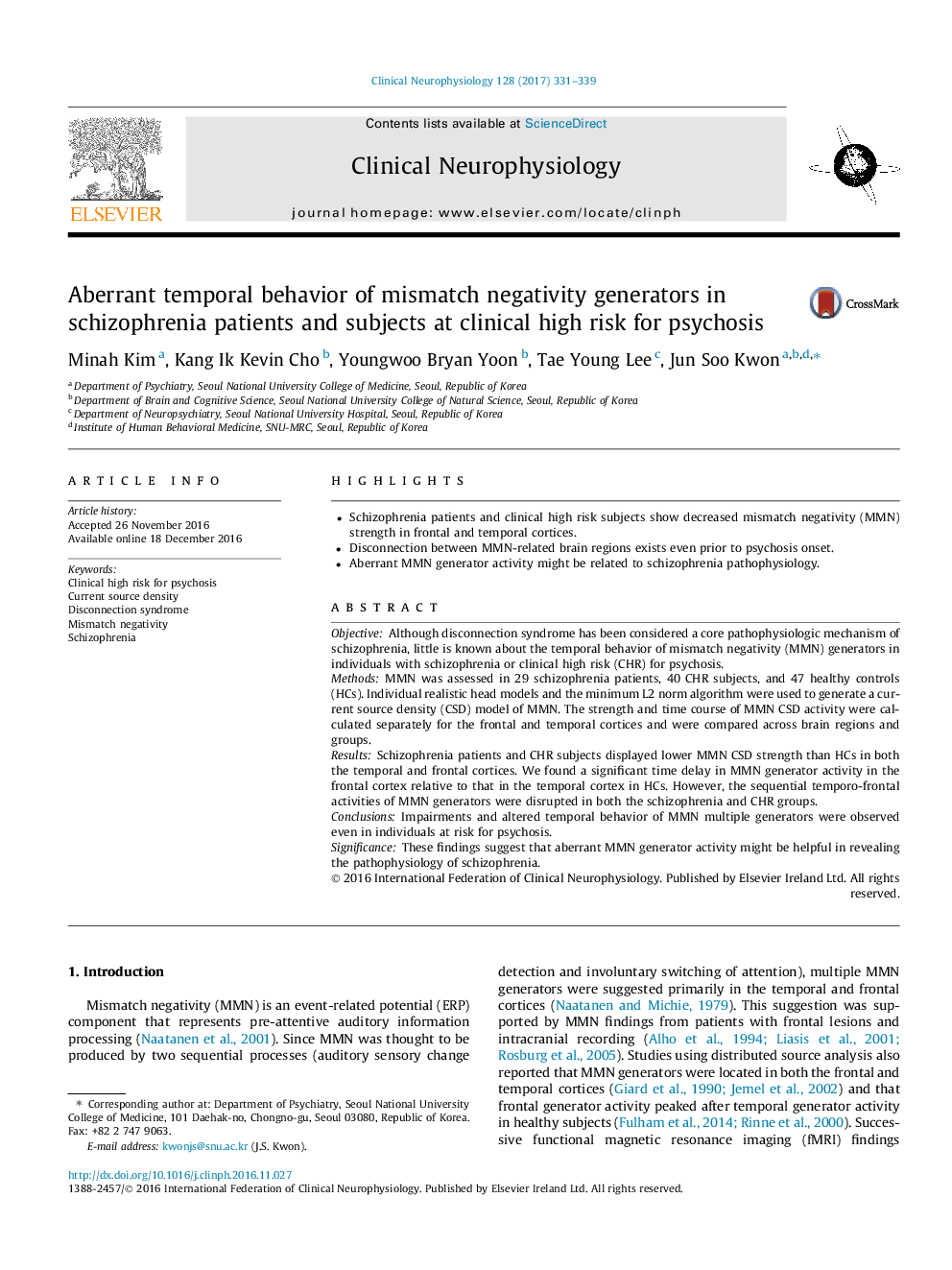| Article ID | Journal | Published Year | Pages | File Type |
|---|---|---|---|---|
| 5627798 | Clinical Neurophysiology | 2017 | 9 Pages |
â¢Schizophrenia patients and clinical high risk subjects show decreased mismatch negativity (MMN) strength in frontal and temporal cortices.â¢Disconnection between MMN-related brain regions exists even prior to psychosis onset.â¢Aberrant MMN generator activity might be related to schizophrenia pathophysiology.
ObjectiveAlthough disconnection syndrome has been considered a core pathophysiologic mechanism of schizophrenia, little is known about the temporal behavior of mismatch negativity (MMN) generators in individuals with schizophrenia or clinical high risk (CHR) for psychosis.MethodsMMN was assessed in 29 schizophrenia patients, 40 CHR subjects, and 47 healthy controls (HCs). Individual realistic head models and the minimum L2 norm algorithm were used to generate a current source density (CSD) model of MMN. The strength and time course of MMN CSD activity were calculated separately for the frontal and temporal cortices and were compared across brain regions and groups.ResultsSchizophrenia patients and CHR subjects displayed lower MMN CSD strength than HCs in both the temporal and frontal cortices. We found a significant time delay in MMN generator activity in the frontal cortex relative to that in the temporal cortex in HCs. However, the sequential temporo-frontal activities of MMN generators were disrupted in both the schizophrenia and CHR groups.ConclusionsImpairments and altered temporal behavior of MMN multiple generators were observed even in individuals at risk for psychosis.SignificanceThese findings suggest that aberrant MMN generator activity might be helpful in revealing the pathophysiology of schizophrenia.
